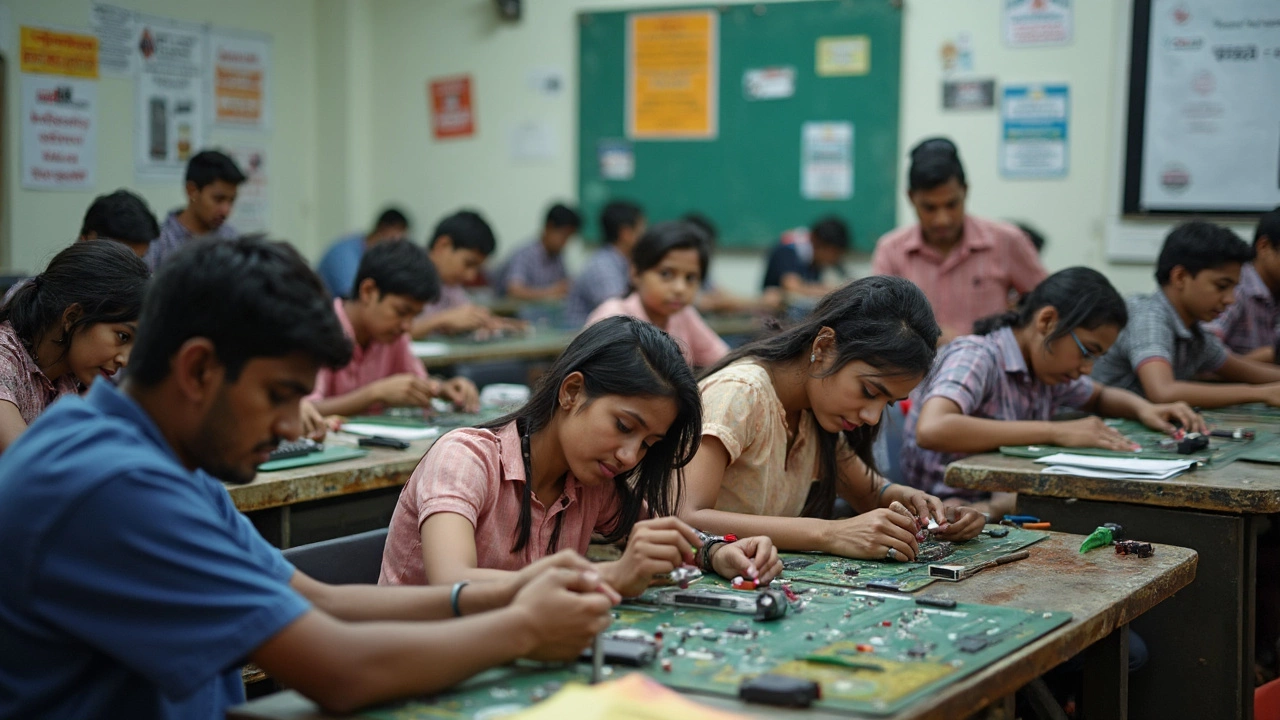Further Education: What It Really Means and How It Opens Doors in India
When people talk about further education, any structured learning that comes after high school, often focused on practical skills rather than academic theory. Also known as post-secondary training, it’s what turns someone with a high school diploma into a certified electrician, a digital marketing specialist, or a qualified fashion designer—without a four-year degree. In India, further education isn’t a luxury. It’s the fastest path out of low-paying jobs and into stable, well-paid work. You don’t need to go to university to build a career. You just need the right training.
Most of the people we talk to don’t want to sit through lectures on ancient history. They want to know how to fix a machine, run an ad campaign, or pass a certification that employers actually recognize. That’s where vocational training, hands-on learning focused on specific trades or job roles, often leading to certification. Also known as skill-based education, it comes in. It’s the backbone of India’s job market now. Whether you’re 18 or 50, vocational training gives you a direct line to employment. And it’s not just about plumbing or electrician work. Think digital marketing, fashion design, trade certifications, even locksmithing. These aren’t side gigs—they’re careers with real salaries, benefits, and growth.
What makes further education work in 2025 isn’t just the course. It’s the certificate, an official credential that proves you’ve completed a specific skill program and met industry standards. Also known as professional certification, it. Employers don’t care if you took a free YouTube course. They care if you have a recognized certificate—like IELTS for English, or a trade license from a government-approved body. That’s why so many of the posts here focus on which certificates actually matter. Which ones get you hired? Which ones open doors to immigration or higher pay? We’ve dug into the real data, not the marketing hype.
And it’s not just about picking a course. It’s about timing, cost, and how long it takes to get results. Some certificate programs take six weeks. Others take six months. Some cost ₹5,000. Others cost ₹50,000. You need to know which ones give you the biggest return. That’s why we’ve collected real examples—like how a 47-year-old got a degree online, or how a BS English graduate landed a content job after a 3-month digital marketing course. These aren’t outliers. They’re patterns.
Further education in India is no longer a backup plan. It’s the main road. And whether you’re looking at a diploma in high-demand fields, a free learning app to start today, or a UK trade course that pays more than some IT jobs, the options are here. You just need to know where to look. Below, you’ll find clear, no-fluff guides on exactly what works—and what doesn’t—in today’s job market. No theory. Just facts, salaries, and steps you can take right now.

Modern Names and Trends: What is Vocational Education Called Today?
Explore the new names for vocational education, how it's evolving, and why it's gaining popularity in today's practical job market. Find out what's behind the shift.